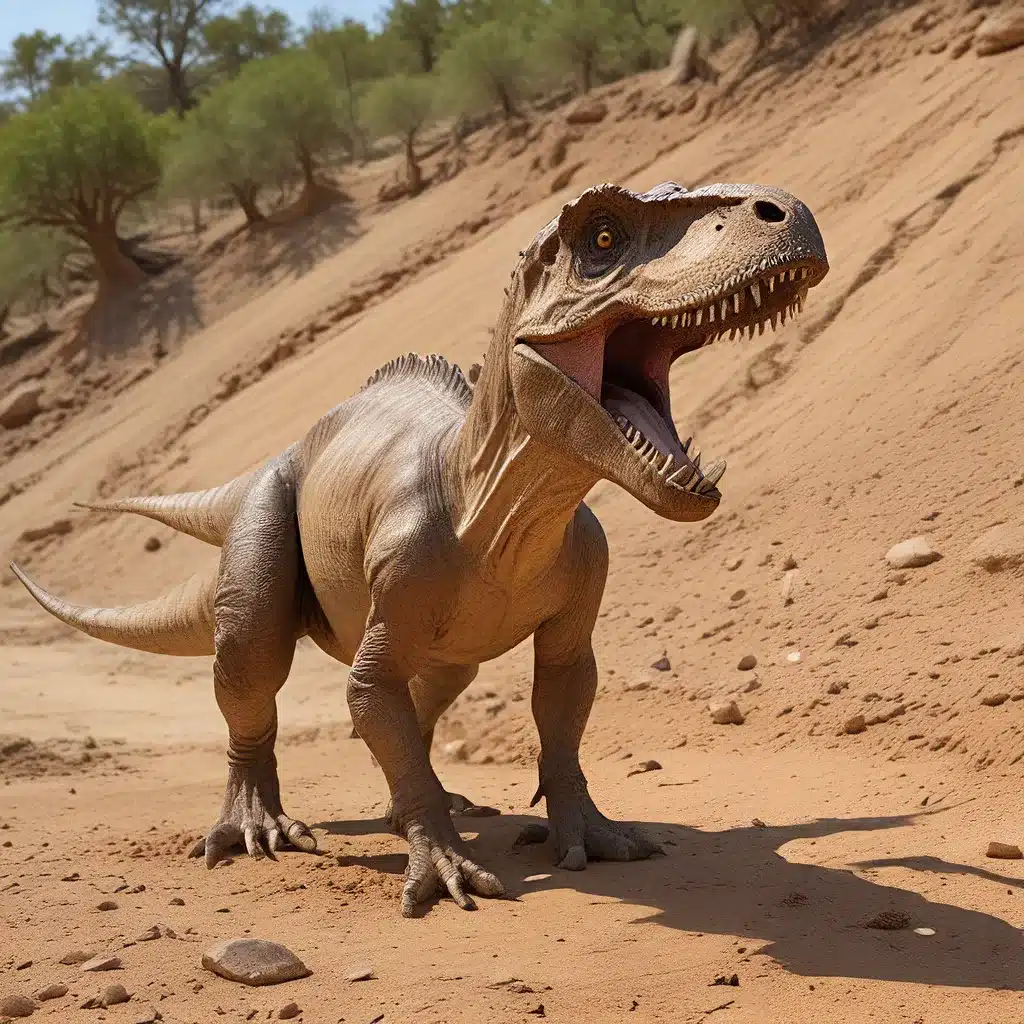
The field of paleontology has witnessed a remarkable transformation in recent years, as a new generation of scientists has challenged long-held beliefs about the preservation of ancient life. At the forefront of this revolution is Dr. Mary Schweitzer, a pioneering researcher whose groundbreaking discoveries have shattered our understanding of what can be gleaned from fossilized remains.
Defying Conventional Wisdom
For decades, the prevailing wisdom in paleontology dictated that soft tissues and organic molecules could not possibly survive the ravages of time, let alone the fossilization process. However, Schweitzer’s work has upended this notion, revealing the incredible potential to uncover intimate details about the lives of long-extinct creatures.
It all began in the remote badlands of the Hell Creek Formation in Montana, where Schweitzer and her colleagues were meticulously excavating the remains of a Tyrannosaurus rex. As they carefully split open the massive femur bone, something remarkable caught Schweitzer’s eye – flexible, stretchy tissue that seemed to defy the very laws of fossilization.
“I took one look and I just said, ‘Uh-uh. This isn’t happening. This is just not happening,'” Schweitzer recalls, the disbelief palpable in her words. “Everyone knows these things don’t last for 65 million years.”
Revolutionizing Paleontology
Undeterred by the skepticism of her peers, Schweitzer delved deeper into her findings, subjecting the mysterious tissues to a battery of tests and analyses. To her astonishment, the results confirmed the presence of what appeared to be blood vessels, bone cells, and even fragments of hemoglobin – all within the fossilized remains of the Tyrannosaurus.
This momentous discovery not only challenged the fundamental assumptions of paleontology but also opened up new avenues of research. If soft tissues and organic molecules could indeed withstand the ravages of time, scientists might be able to glean unprecedented insights into the lives of dinosaurs and other extinct creatures.
“If soft tissue can last 65 million years, there may be a lot of things out there that we’ve missed because of our assumption of how preservation works,” says Jack Horner, a renowned dinosaur scientist and Schweitzer’s longtime collaborator.
Uncovering Secrets of Dinosaur Biology
Schweitzer’s findings have already begun to reshape our understanding of dinosaur biology. For instance, the identification of medullary bone – a type of tissue found in the long bones of female birds during ovulation – has allowed researchers to definitively determine the sex of certain dinosaur specimens.
“Everything we’ve ever tried to do has been an utter guess,” Schweitzer admits. “For instance, researchers had tried to distinguish a male from a female based on the shape of a creature’s body or the size of its head crest. Now we have a way to link gender with morphology and, drawing on parallels with living animals, even with behavior.”
Moreover, the discovery of what appear to be intact blood vessels and bone cells has opened up the possibility of comparing dinosaur tissue with that of living animals. This could lead to a better understanding of ancient biology, including the potential identification of Cretaceous-era parasites and the reconstruction of prehistoric disease.
Confronting Skepticism and Controversy
As groundbreaking as Schweitzer’s findings have been, they have also sparked intense debate and controversy within the scientific community. Some researchers have questioned the validity of her methods and the authenticity of the materials she has discovered, arguing that the observed tissues may be the result of contamination or other external factors.
“If you can preserve soft tissue under these circumstances, all bets are off,” says James Farlow, a paleontologist at Indiana University-Purdue University at Fort Wayne. “But there are those who remain deeply skeptical, insisting that the cellular material Schweitzer found must be contamination from outside sources.”
Schweitzer acknowledges the need for rigorous validation, stating, “I am a slam-dunk scientist. I would have much rather held the paper back until we had reams and reams of data.” However, the pressure to secure funding and publish her findings has compelled her to move forward, even in the face of intense scrutiny.
Bridging the Gap Between Science and Faith
Adding to the complexity of Schweitzer’s work is her own religious faith. As an evangelical Christian, she has found herself at the center of a raging cultural controversy, with some biblical literalists interpreting her findings as evidence that the Earth is much younger than the scientific consensus.
“If God is who He says He is, He doesn’t need us to twist and contort scientific data,” Schweitzer asserts. “The thing that’s most important to God is our faith. Therefore, He’s not going to allow Himself to be proven by scientific methodologies.”
This position has drawn criticism from both creationists and some of her scientific colleagues, who have accused her of compromising her objectivity. However, Schweitzer remains steadfast in her commitment to following the evidence wherever it may lead, even if it challenges the preconceptions of both the scientific and religious communities.
Unlocking the Secrets of the Past
As Schweitzer’s work continues to make waves in the world of paleontology, the potential implications are far-reaching. The possibility of recovering and analyzing ancient biomolecules could unlock secrets about the lives and environments of long-extinct species, shedding new light on the evolution of life on Earth.
The Lost Kingdoms website is at the forefront of exploring these groundbreaking discoveries, bringing the latest insights and theories to a wide audience of history enthusiasts and science lovers alike.
Through the work of innovative researchers like Dr. Mary Schweitzer, the field of paleontology is being transformed, and the boundaries of what we can learn from the past are being pushed ever further. As Schweitzer herself eloquently states, “I think it’s stupid to say, ‘You’re never going to get DNA out of dinosaur bone, you’re never going to get proteins out of dinosaur bone, you’re never going to do this, you’re never going to do that.’ As a scientist, I don’t think you should ever use the word ‘never.'”


